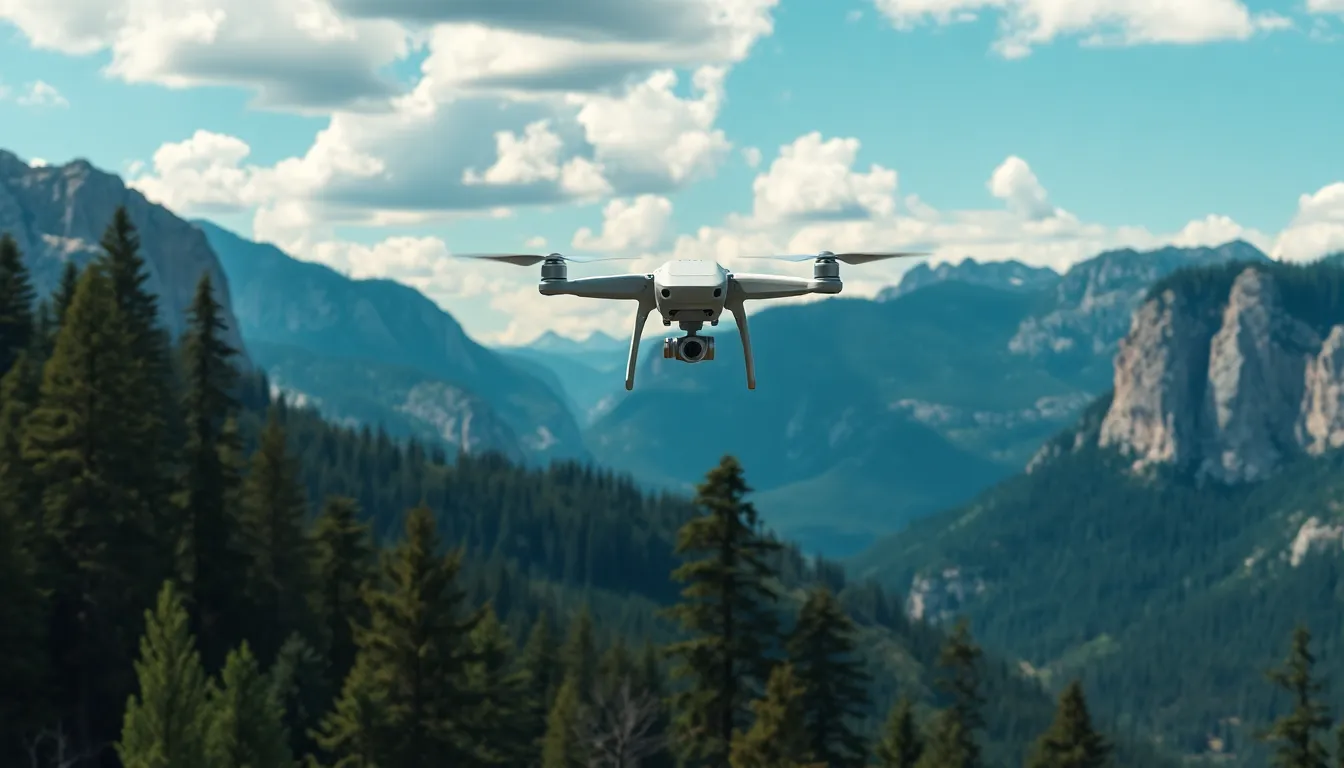Drones are the shiny new toys that everyone wants to play with, but when it comes to flying them in national parks, the rules can feel as tangled as a squirrel in a kite string. Imagine soaring above stunning landscapes, capturing breathtaking views, and then—bam!—you’re met with a park ranger who’s not impressed by your aerial photography skills.
Before packing up your drone and heading to that majestic vista, it’s crucial to understand the dos and don’ts of flying in these protected areas. National parks are sanctuaries for wildlife and natural beauty, and they come with strict regulations to keep them that way. So, can you really unleash your inner drone pilot among the towering trees and sweeping valleys? Let’s dive into the nitty-gritty and find out if your drone dreams can take flight or if they’ll be grounded for good.
Table of Contents
ToggleOverview of Drone Regulations
Drones face strict regulations in national parks due to protection efforts for wildlife and ecosystems. The National Park Service prohibits the use of unmanned aircraft within its boundaries unless special permits are obtained. Flying drones disrupt natural habitats, causing stress to wildlife and diminishing the park experience for visitors.
Federal regulations also impact drone use in these areas. Title 14 of the Code of Federal Regulations outlines national aviation authority rules, requiring drone operators to comply with airspace regulations. Flying can occur in designated areas only, and many parks ban all drone activity.
Certain exceptions exist for research or educational purposes. Researchers may seek permits to conduct aerial surveys for conservation efforts. Such permits undergo a review process to ensure minimal impact on park resources.
Drone pilots must remain aware of state and local laws as well. Some states impose additional regulations that further restrict or dictate drone usage. For instance, users should check park-specific guidance on drone rules for each park they plan to visit.
Enforcement of drone regulations occurs through various means, including park rangers monitoring drone activity. Penalties for unauthorized flying can include fines and confiscation of equipment. Obligation to respect park rules safeguards the natural environment, enhancing the overall visitor experience.
By understanding and adhering to drone regulations, enthusiasts can enjoy their hobby while preserving the integrity of these cherished natural spaces.
Current Laws on Drones in National Parks

Drones face strict regulations in national parks due to their potential impact on wildlife and natural landscapes. Understanding these laws is essential for drone enthusiasts aiming to fly in these protected areas.
Federal Regulations
Federal regulations govern drone operations, as detailed in Title 14 of the Code of Federal Regulations. The National Park Service prohibits unmanned aircraft within park boundaries unless specific permits are obtained. Many parks restrict drone activity entirely. Aerial surveys conducted for research or education may receive exceptions, provided a permit is secured. Compliance with these federal regulations ensures the protection of natural habitats.
Specific Park Rules
Specific park rules may vary widely, so checking local guidelines is necessary before flying. Some national parks implement total bans on drones, while others allow them in designated areas. Additional rules might include restrictions on flight times and altitude. Permits may be required, especially for commercial uses. Park rangers enforce these regulations, ensuring that drone pilots adhere to local and federal laws. Violating these rules can result in hefty fines or confiscation of drone equipment.
Impacts of Drones on Wildlife and Environment
Drones significantly affect wildlife and the natural environment within national parks. Understanding these impacts is essential for responsible drone operation.
Disturbance to Wildlife
Drones create noise that can startle animals, disrupting their natural behaviors. Many species experience increased stress from drone activity, particularly during critical life stages like nesting and feeding. Birds, for instance, may abandon nests if drones intrude too closely, leading to reduced reproductive success. Wildlife also relies on stable habitats for foraging and mating; disturbances can disrupt these critical activities. Research shows that frequent drone use can alter the migration patterns of sensitive species. Protecting wildlife means respecting their space and minimizing disturbances caused by drones.
Effects on Natural Scenery
Unregulated drone use affects the visual landscape of national parks. These aircraft can intrude on the serene experience visitors seek, detracting from the park’s natural beauty. Aerial views captured by drones may create a false impression of the park’s vastness and serenity, overshadowing the authentic experience. Littering from drone operators contributes to environmental degradation, while visible flight paths can mar pristine vistas. Preserving the integrity of these environments is essential for maintaining their allure. Regulations help ensure that the natural scenery remains undisturbed for future generations to appreciate.
Exemptions and Special Permits
Exemptions exist for the prohibition of drones in national parks. Special permits may allow flying under specific circumstances.
When Can Drones Be Flown?
Drones can be flown in national parks when special permission is obtained. Research or educational projects often qualify for these exceptions. Some parks permit drone flights for aerial surveys that support conservation efforts. Obtaining approval hinges on demonstrating the project’s value to park management. Seasonal factors, such as wildlife nesting periods, also influence whether permission is granted. Each park may impose unique stipulations regarding flight times and altitudes.
Application Process for Permits
The application process for drone permits involves several steps. First, applicants must identify the relevant national park and review its guidelines. Next, completing the National Park Service’s aerial permit application is essential. Detailed project descriptions, including objectives and flight plans, are required. Submission often necessitates a lead time of 60 days before the intended flight date, ensuring sufficient review. Approval may include conditions to minimize impacts on wildlife and park visitors. Fees may apply, depending on the permit type and park regulations.
Alternatives to Flying Drones in National Parks
Finding alternatives to flying drones in national parks allows enthusiasts to explore their passion while respecting regulations that protect these natural spaces.
Photography from Ground Level
Ground-level photography offers a unique perspective, capturing stunning details often missed from above. Photographers can focus on landscapes, wildlife, and flora without disturbing animals. Utilizing tripods and high-quality lenses enhances image clarity. Techniques such as close-ups and wide-angle shots can create captivating compositions. Exploring different times of day, like sunrise and sunset, adds dramatic lighting to photos. Familiarizing oneself with park rules before taking photos ensures compliance and reduces the chances of interference with wildlife.
Using Drones in Adjacent Areas
Flying drones in adjacent areas presents an opportunity for drone enthusiasts to enjoy aerial photography legally. Identifying nearby locations that permit drone use is essential. Parks often have designated zones nearby where regulations differ. Understanding local laws enhances compliance and minimizes risks. While flying, maintaining a distance from national park boundaries provides safety and respects wildlife. Utilizing flight planning apps helps in navigating allowable areas and avoiding restricted zones. Engaging with the drone community can also provide insights into the best locations for flying while adhering to regulations.
Flying drones in national parks is a complex issue that requires careful consideration of regulations and environmental impacts. Enthusiasts must prioritize compliance with federal and park-specific rules to protect wildlife and preserve the beauty of these natural spaces. While opportunities exist for special permits under certain conditions, the potential penalties for unauthorized drone use highlight the importance of understanding the law.
By exploring alternatives like ground-level photography or nearby locations where drone use is allowed, enthusiasts can still capture breathtaking images without compromising the integrity of national parks. Ultimately, respecting these regulations ensures that future generations can enjoy the wonders of nature in their purest form.


